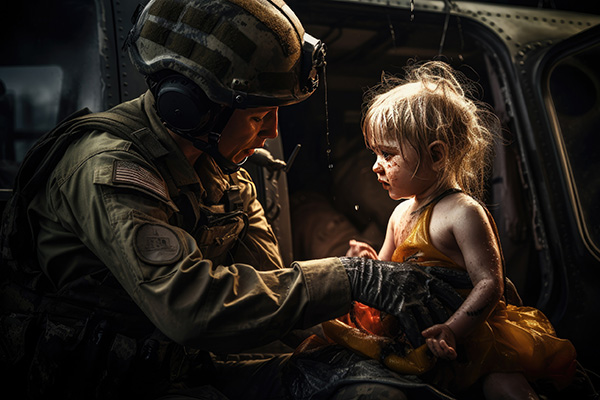 Who is my soulmate?” This is a frequently asked question during psychic consultations. Clients are eager to find out whether their existing partner is “the one” or when they might meet their soulmate.
Who is my soulmate?” This is a frequently asked question during psychic consultations. Clients are eager to find out whether their existing partner is “the one” or when they might meet their soulmate.
Some individuals enter relationships believing they’ve found their soulmate, only to see their supposed “everlasting love” leave with another person. Confused, they turn to me, asking, “How can this be if two souls were meant to be together?”
Many find themselves heartbroken and bewildered when a well-meaning friend or relative—or a misguided psychic lacking integrity—encourages them, insisting that this person is certainly “the one.”
The misconception that a romantic connection is fated can make the resultant loss even more devastating. Just because a bond feels profound or unique doesn’t guarantee it will endure forever. Authentic soul connections have a purpose, yet that purpose isn’t always love, romance, or lasting companionship.
Dishonest readers and individuals with flawed judgment frequently misinterpret situations, creating false hope that leads lovestruck people to cling to relationships that were never intended to be—or even exist, for that matter.
So, what precisely is a soulmate? Spiritually, a soulmate is someone with whom you share a significant pre-birth or past-life connection, or both. These individuals come into our lives to aid our spiritual growth, often reuniting for purposes of healing and transformation.
I recognized you instantly. All of our lives flashed through my mind in a split second. I felt a pull so strongly towards you that I almost couldn’t stop it ~ J. Sterling
Pre-Birth Allies
Before we are born, some souls form agreements to meet during this lifetime. These contracts facilitate mutual karmic growth, healing, and spiritual advancement.
A pre-birth soulmate isn’t an individual from a prior life; rather, it’s a compatible soul that chose to connect with you for the first time in this current incarnation. Together, you embark on a journey to learn particular lessons, undertake karmic roles, and experience parts of the journey, guided by a promise made before your arrival on Earth.
Past-Life Companions
At times, we come across souls with whom we’ve shared numerous past lifetimes. In previous incarnations, a person may have been a spouse, sibling, parent, friend, mentor, or even your adversary. This connection tends to be immediate, and you feel an exhilarating familiarity as if you have known each other for eons.
The attraction is energetic, arising from shared karma, emotional ties, unresolved lessons, and an undeniable soul family bond. However, a soulmate does not necessarily equate to a spouse or life partner. Throughout our lives, we encounter many soulmates, each serving a different purpose.
The immediate recognition can feel like fireworks in a romantic context. However, it can also be transformative in a new friendship or professional alliance. You might even feel it during an initial encounter, bonding instantly with a teacher, healer, or fellow traveler on life’s journey.
Whether from before birth or past lifetimes, soulmates appear in our lives to catalyze soul evolution. Throughout your life, you will meet various soulmates, each arriving with a specific purpose in your journey of growth, awakening, and transformation.
It is an absolute human certainty that no one can know his own beauty or perceive a sense of his own worth until it has been reflected back to him in the mirror of another loving, caring human being ~ John Joseph Powell
Types Of Soulmate Contracts
As a result, different kinds of soulmate contracts exist. You can think of these as tailored “lesson plans” designed pre-birth by your higher self in collaboration with spirit, source, god, or the divine. These contracts involve soulmates who enter your life to offer:
Romantic life partners: Some soulmates are intended for long-lasting love, but even this requires perfect timing.
Mirrors of self: These soulmates reveal hidden facets of your being, unveiling your fears and desires, allowing you to better grasp your identity.
Destiny weavers: They present opportunities, connections, or pivotal moments that significantly impact your life’s course.
Joy-bringers: Their presence elevates your spirit, reminding you that laughter and lightness are vital components of existence.
Seasonal companions: They accompany you during transitional phases, providing support before gradually exiting your path.
Sacred teachers: Whether spiritual guides, mentors, or even adversaries, they impart wisdom that shifts your beliefs and comprehension of life.
Healing allies: They come into your life to foster deep healing—physically, emotionally, or spiritually. They bring comfort, safety, and restoration during vulnerable or transformative times.
Sacred collaborators: Soulmates who assist your spiritual mission, creative vocation, or life’s work. Often, they are co-visionaries, mentors, or steadfast allies who motivate you to pursue projects or causes that fulfill your higher purpose and become part of your legacy.
Karmic catalysts: Soulmates who spark karmic growth, activate crucial life lessons, and encourage reconciliation from previous or parallel lifetimes. These connections might feel intense or challenging, but they facilitate your evolution. They often compel you to confront deep-seated wounds, alter your behaviors, and evolve significantly, sometimes in painful ways.
Each of these soul contract relationships serves a distinct purpose. Some may be brief, while others endure for a lifetime, yet they all contribute to shaping your journey.
To say that one waits a lifetime for his soulmate to come around is a paradox. People eventually get tired of waiting, take chances on others, and through commitment turn them into soulmates, a process that takes a lifetime to perfect ~ Criss Jami
The Myth Of The Flawless Puzzle Piece
Individuals frequently envision their soulmate as a perfect missing piece of a puzzle that seamlessly fits into place. Popular culture perpetuates this fantasy with soaring music in the background. Yet, as Elizabeth Gilbert expresses, “a true soulmate is a mirror, the person who highlights everything holding you back. They direct your attention toward your own self so you can transform your life.”
Indeed, some soulmates make your heart flutter. Others might make you uneasy. All of them encourage you to embrace authenticity, shed your masks, heal your wounds, and summon the courage to love without attachment.
My Personal Journey With A Soul Partner
Let me assure you: I speak from personal experience. My current husband and I have been intertwined over multiple lifetimes. However, when we first met as teenagers, we didn’t remain together. Life separated us into different marriages and locations.
Years passed: children, careers, heartbreaks, revelations. We stayed friends at a respectful distance, supporting one another from opposing sides of the stage. It wasn’t until I was in my late forties and he in his fifties that our paths finally intertwined.
Could we have married at eighteen? Absolutely. Yet the universe, with its wise mischief, understood we weren’t ready. We each had specific lessons to learn from other relationships: humility, resilience, spiritual discipline, and compassion. Had we not experienced those growth cycles—many of which were distinctly unpleasant—we would lack the emotional maturity essential for the profound partnership we now relish.
Reflecting on it, I recognize that if we had rushed into marriage in our youth, we might have ended up divorced, our unrefined edges tearing each other apart. The waiting—sometimes lonely and painful—was not a punishment. It was an alchemical process that shaped us into individuals capable of honoring this bond.
People assume a soulmate is your perfect match, and that’s what everyone desires. But a true soulmate acts as a mirror, revealing everything that holds you back, showing you to your own attention so you can change your life ~ Elizabeth Gilbert
The Married-to-Someone-Else Dilemma
Do you recall Alex Forrest, the character portrayed by Glenn Close in the 1987 film Fatal Attraction? The narrative of that movie isn’t entirely implausible. In fact, it portrays a toxic situation that is all too prevalent and seldom concludes well for all parties involved.
You encounter a married individual and feel an overwhelming urge to possess them as your own. You hide those feelings of desire and fate like treasured secrets, creating elaborate fantasies where the two of you escape together as soon as circumstances permit.
Then, the years slip by. Birthdays and holidays come and go. Opportunities pass while you wait, certain that fate will fulfill its pledge. Yet nothing evolves, except perhaps your escalating frustration, disappointment, or resentment.
The harsh truth is that not every soulmate from a previous life is intended to be your partner in this life. They may serve a different purpose this time, such as fostering humanity, pursuing enlightenment, saving the planet, nurturing a future leader, fulfilling their creative calling, or balancing karma in ways you cannot comprehend.
By insisting that the universe and another free-spirited individual conform to your fantasy, you subject yourself to unwarranted distress. You also risk missing out on incredible partners, mentors, and friends who could be right in front of you, while you long for a closed door that isn’t meant to open for you.
Letting Go And Trusting Your Gut
What should you do when you develop feelings for someone who doesn’t reciprocate or is unavailable? Let them go. Take a moment to breathe, mourn, write it down, walk barefoot on the earth—do whatever helps you release. Then, redirect your energy toward living your best life!
This doesn’t equate to losing hope. It means surrendering the outcome to divine timing. If a partnership is part of your soul blueprint, it will reemerge—often when you least anticipate it, when you no longer require it to feel “whole.”
Refusing to let go merely keeps you stalled on the shoulder of life’s highway with your engine running while traffic rushes by. The years spent waiting in fantasy are years you cannot reclaim.
Romantic ideals press us to “follow our hearts,” but the heart can be misleading when it comes to recognizing soul contracts. It is easily influenced by longing and projection. Your intuition, your gut instinct, is a much more reliable guide. When you quiet the fairy-tale narratives and silence the ego’s commentary, seeking the truth from your guides, the answer manifests in your body as calm knowledge. If that inner affirmation is absent or unclear, take heed!
Try this straightforward practice: Close your eyes, place one hand on your abdomen (solar plexus), and inhale deeply. Visualize the person or situation. Observe your body’s immediate response before your mind spins a tale. Expansion feels warm, relaxed, and open, whereas contraction feels tight, uneasy, or heavy. Trust your initial impression. Don’t taint it with hopes or fears.
So, the next time you believe you’ve found “the one,” remember: Seek guidance from your intuition, not your fantasies. Each of us navigates life surrounded by multiple soulmates, each with a purpose—some to challenge us, some to comfort us, and some to accompany us through old age.
Your objective isn’t to grasp every shimmering thread but to remain present and curious while being open to growth. Acknowledge that divine timing may require patience and deviations. Embrace the lessons offered by every interaction, whether enjoyable or uncomfortable.
Resist the temptation to control the cosmic narrative. Live your purpose, refine your light, and let the universe manage the casting and choreography. When the moment is right—whether tomorrow or twenty years down the line—your soul’s current resonance will harmonize with the right partner, who will appear right on cue.
Trust that what genuinely belongs to you will find its way to you. Until then, relish every dance with whoever shares the floor, knowing that every encounter is part of your sacred curriculum.
|
 About The Author: Sheri About The Author: Sheri
Sheri is a global psychic and angel reader who provides clear insights on financial matters, careers, relationships, manifestation of dreams, and navigating life’s challenges. Since 2004, she oversees an International Spiritual Healing Center where she practices Reiki—either working with clients or teaching them the various levels of Usui Reiki. Her office space is used for readings conducted via mail, phone, chat, or in person. Since 2008, she has refined her abilities on various psychic service platforms, providing readings through telephone, chat, or email. Additionally, she collaborates on a spiritual network for individuals who have faced traumatic losses, drawing from her own experiences with such tragedies. Sheri’s work is characterized as honest, compassionate, and transformative, and she aspires to see her clients reach new heights of spirituality and growth, ultimately working to make the world a better place. You can receive a psychic reading from Sheri at PsychicAccess.com.
|
Soulmate connections are frequently idealized in mainstream media as the ultimate expression of love and companionship. But what precisely constitutes a soulmate connection, and how can we comprehend and nurture these bonds? In this thorough guide, we will delve into the essence of soulmate connections, the indicators of a soulmate relationship, and ways to foster a profound and meaningful bond with your soulmate.
What is a Soulmate Connection?
A soulmate connection represents a deep and significant relationship between two people that transcends time, space, and circumstances. It is often viewed as a spiritual link that goes beyond mere physical attraction or compatibility. Soulmates are thought to be two souls destined to unite, and their connection is grounded in mutual understanding, respect, and unconditional love.
Signs of a Soulmate Relationship
Several indicators can suggest you are in a soulmate relationship. These include:
1. Instant Connection: You experience an immediate and intense bond with your soulmate, feeling as if you have known each other across many lives.
2. Shared Values and Beliefs: You and your soulmate hold similar values, beliefs, and life goals, establishing a solid foundation for your relationship.
3. Unconditional Love: Your soulmate accepts you entirely, loving you for who you are without passing judgment or offering criticism.
4. Synchronicity: You notice synchronistic events and coincidences that seem to draw you together and strengthen your connection.
5. Growth and Healing: Your soulmate relationship encourages you to develop, heal, and evolve individually, resulting in personal and spiritual transformation.
How to Cultivate a Soulmate Connection
Nurturing a soulmate connection calls for effort, open communication, and a readiness to face challenges together. Here are some strategies to enhance and fortify your soulmate relationship:
1. Communicate Openly and Honestly: Effective communication is vital in any relationship, particularly in a soulmate connection. Be straightforward with your soulmate about your thoughts, feelings, and needs.
2. Practice Empathy and Compassion: Show understanding and compassion toward your soulmate, attempting to appreciate their perspective and feelings.
3. Create Sacred Space: Establish a sacred space for you and your soulmate to connect more deeply, whether through meditation, rituals, or shared activities.
4. Support Each Other’s Growth: Encourage and nurture each other’s personal development and be there for one another during difficult times.
5. Trust and Surrender: Have faith in the divine timing of your soulmate connection and surrender to the universe’s flow. Trust that everything is unfolding as it should.
In summary, comprehending soulmate connections requires a profound sense of self-awareness, empathy, and a commitment to cultivating a fulfilling relationship with your soulmate. By identifying the signs of a soulmate relationship and actively working towards nurturing and strengthening your bond, you can experience the transformative essence of true love and connection with your soulmate. Continue reading →

















